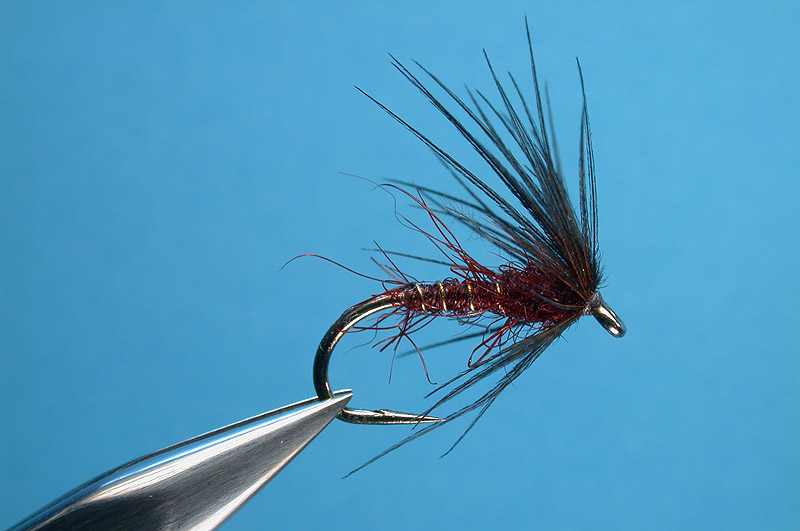Page 1 of 1
Fiery Brown Spider
Posted: Tue Apr 07, 2009 5:59 pm
by Hans Weilenmann
 Fiery Brown Spider
Fiery Brown Spider
Hook: Kamasan B175 #14
Thread: Benecchi 12/0, grey
Hackle: Mallard drake flank barbs (brown, 'out of season' feather)
Rib: Fine gold wire
Abdomen: Seal's fur, fiery brown (or substitute)
Thorax: Seal's fur, fiery brown (or substitute)
Cheers,
Hans W
Re: Fiery Brown Spider
Posted: Tue Apr 07, 2009 8:08 pm
by letumgo
Splendid!
Re: Fiery Brown Spider
Posted: Wed Apr 08, 2009 8:02 am
by William Anderson
Hans, that's a nice combination. I notice you have tended to use courser dubbing for bodies or thoraxes in most of the flies you've posted in recent months. Seal or Argentinian Hare. You obviously have a preference for these, and I know have never put together a pattern without giving the materials some serious consideration as to performance and effectiveness. Care to share how you've come to use more coarse dubbings than softer dubbings. I know, I know, you're going to point to the feathery flume thoraxes of a few of your patterns, but the majority are still coarse in nature.
just curious.
w
Re: Fiery Brown Spider
Posted: Wed Apr 08, 2009 8:09 am
by Hans Weilenmann
William,
On some patterns I like a sleek look, on others I like the 'halo' and the suggestive nature of a coarser dubbing. Most of the time I visualize the result I aim for, and select materials to arrive at that destination

That said, the 'halo' effect is not limited to coarse dubbing types - as can be seen in my avatar choice where the dubbing is fine structure mole.
Cheers,
Hans W
Re: Fiery Brown Spider
Posted: Wed Apr 08, 2009 8:18 am
by William Anderson
So is your contention that the coarser dubbings do better job of producing that halo effect? And can you describe what you mean by the halo effect achieved by using the coarser dubbing relative the finer dubbings like mole or muskrat? I know you can achieve the effect using both. And my preference is for the halo effect + the mobility of the finer dubbings on fly bodies. To each his own, but I'm not beyond being convinced and changing my position, sometimes twice a day.

w
Re: Fiery Brown Spider
Posted: Wed Apr 08, 2009 8:23 am
by Hans Weilenmann
William,
Coarser, longer staple, fibers such as seal are far better equipped to shape and maintain a wide outline 'halo', compared to the shorter staple and fine structure of, say, mole.
You view this any different?
Cheers,
Hans W
Re: Fiery Brown Spider
Posted: Wed Apr 08, 2009 9:20 am
by William Anderson
Hans,
No, a stiffer halo shape makes good sense. Its a departure from the traditional patterns where very sparse fine dubbing it used along the silk body, and it provides a different effect from a body dubbed of finer material for sure. I tie wingless wets, with silk bodies, metal bodies, quill bodies, herl bodies, fine dubbed bodies and course dubbed bodies. They all can be effective and some obviously would be better to imitate a particular bug for a given circumstance than others. But I wonder if you really believed one method was more effective than another, is it just the joy of diversity that keeps us tying so many different versions? The art of it?
Anyone else care to weigh in?
w
This hare's ear is as course as I've tied, but maybe I'm missing out on an opportunity.

Re: Fiery Brown Spider
Posted: Wed Apr 08, 2009 8:34 pm
by Soft-hackle

Mark


